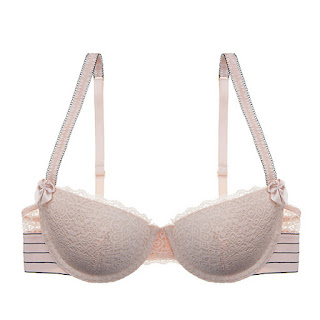Tell your plastic surgeon and anesthesiologist about every medication or supplement you take on a daily or regular basis. Also include those that you have taken in the last few months. Some medications, including certain anti-depressants, take several weeks to leave the body. Just because something is herbal or "natural" does not mean that it is safe. If these products are potent enough to do what they say they can, then they are also powerful enough to have side effects. Do not leave anything out.
Almost everyone who undergoes any surgery is told not to take aspirin or other non-steroidal anti-inflammatory drugs (NSAIDs) such as ibuprofen for at least a week before their surgery. Some surgeons tell you not to take these medications for two weeks before surgery.
Aspirin and other NSAIDs inhibit blood clotting and can cause excessive bleeding during and after surgery. Certain herbal remedies, too, may increase bleeding risk. For example, vitamin E, omega-3 fatty acids, green tea and gingko biloba can increase the risk of bleeding during and after breast implants surgery.
If you need a pain reliever in the days before your surgery, acetaminophen (Tylenol) is usually considered safe. Ask your surgeon what you can take to relieve pain in the days and weeks before your surgery to be on the safe side.
If you smoke, stop at least two to three weeks before surgery. Don't start again until at least two to three weeks after your surgery. Smoking significantly impairs circulation to the skin and interferes with healing. This may be a good time — and reason — to kick the habit for good. There are more tools available than ever before to help you quit. Talk to your surgeon about your smoking cessation options. Nicotine patches and or other nicotine replacement systems can't be used as smoking cessation aids immediately before or during surgery. They cause some of the same problems with wound healing as those caused by cigarette smoking.
A to Z List of Medications to Avoid Before Cosmetic Surgery
AAll Advil products, Alka-Seltzer, Aluprin, Aleve, Amigesic capsules, Anacin, Ansaid, Analval, Anaprox, Anaprox-DS, Anaproxen, Anodynos, Ansaid, APC, Argesic, Arthra-G, Arthralgen, Arthritis Pain Formula, Arthritis Strength Bufferin, Arthropan, Arthropan Liquid, Ascodeen, Ascriptin, all Ascriptin products, Asperbuf, Aspercin, Aspergum, aspirin (of any kind, including suppository form), ASpirTab, Asprimox products, ASA Tablets, Axotal, Azdone, azulfidine products
BB-A-C, all Bayer Aspirin products, BC Powder/Tablets, Bismatrol, bilberry tablets, Brufen products, Buff-A-Comp, Buff-A-Comp No.3 Tablets with codeine, Buffaprin, Buffasal, all Bufferin products, all buffered aspirin products, Buffets II, Buffex, Buffinol, Butalbital, Butal/ASA/caffeine compound, Butazolidin
CCama Arthritis Pain Reliever, Cataflam, carisoprodol, cayenne, Cephalgesic, Cheracol, Clinoril, Congespirin, Contac products, Cope, Coricidin products, Coumadin, Cosprin products, CP-2
DDamason-P, Darvon products, Daypro, Deprenyl, diclofenac, diflunisal, dipryridamole, Disalcid, Diurex, Doan's products, Dolobid, Dolophine, Drinophen, Dristan products, Duoprin products, Duradyne DHC
EEasprin, echinacea, Ecotrin products, Eldepryl, Emagrin, Empirin products, Emprazil, Endodan, Epromate-M, Equagesic, Equazine-M, etodolac, Excedrin
FFeldene, fenoprofen, Fiogesic, Fiorinal products, Florgen, Flurbiprofen, 4 Way Cold products
GGarlic tablets or supplement, Gelpirin, Genpril, Genprin, Gensan, Ghemnisym, ginger, Gingko biloba, green tea, Goody's Headache Powder products
HHaltran, heparin, Halfprin
IIbu, Ibu-Tab, ibuprofen, Ibuprin, Ibuprohm, Indocin, Indochron, indomethacin, Infantol, iproniazid, isocarboxazid, Isollyl
LLanorinal, licorice root, Lodine, Lortab ASA
MMagan, Magnaprin, Magsal, all Monoamine oxidase (MAO) inhibitors, Marnal, Marplan, Marthritic, Measurin, meclofenamate, Meclomen, Medigistic-Plus, Medipren, Menadol, Meprogesic, methocarbamol, Micranin, Midol products, Mobidin, Mobigesic, Momentum, Monogesic, all Motrin products
NNabumetone, Nalfon, Naprosyn, Nardil, nefazodone, Norgesic products, Norwich Extra Strength Aspirin, Nuprin, NyQuil/NyQuil P.M.
OOmega-3 oil (fish oil), Orphenagesic products, Orudis, Oruvail, oxycodone/aspirin
PP-A-C, Pabalate, Pacaps, Pamprin-IB, Panalgesic, Panodynes, papaya, Parnate, PediaProfen, Pedrazil, pentoxifylline, Percodan products, Persantine, Persisrin, PetoBismol, Phenaphen, phenelzine, pine bark extract, piroxicam, Presalin, Propoxyphene, Ponstel, Pycnogenol
RRelafen, Rexolate, Robaxin, Robasisal, Roxiprin, Rufen, Robaxisal
SSalicylic acid, Salatin. Saleto products, Salflex, salicylamide, Salocol, salsalate, Salsitab, selegiline, Serzone, Sine-Aid products, Sine-Off products, Soma Compound products, St. Johns wort, St. Josephs Aspirin products, sodium thiosalicylate, Stanback Analgesic, Sudafed, sulindac, Supac, Synalgos products
TTalwin, Tenol-Plus, Tolectin products, tolmetin, Toradol, tranylcypromine, Trendar, Trental, Triaminicin, Tricosal, Trigesic, Trilisate, Tri-Pain
VValesin, Vanquish, ViroMed, Vitamin E, Voltaren
WWarfarin, Wesprin Buffered
* This is not a complete list of all the medications and supplements that can cause problems with surgery or anesthesia. Make sure to tell your surgeon and anesthesiologist about everything you take on a regular basis, including those products that you have taken in recent months.
Reference: http://www.breastimplants4you.com/medicationlist.htm




